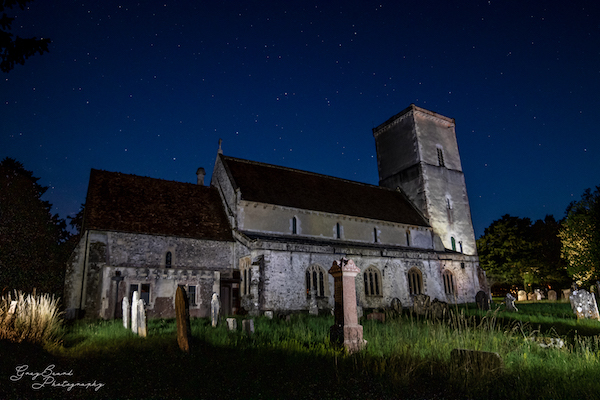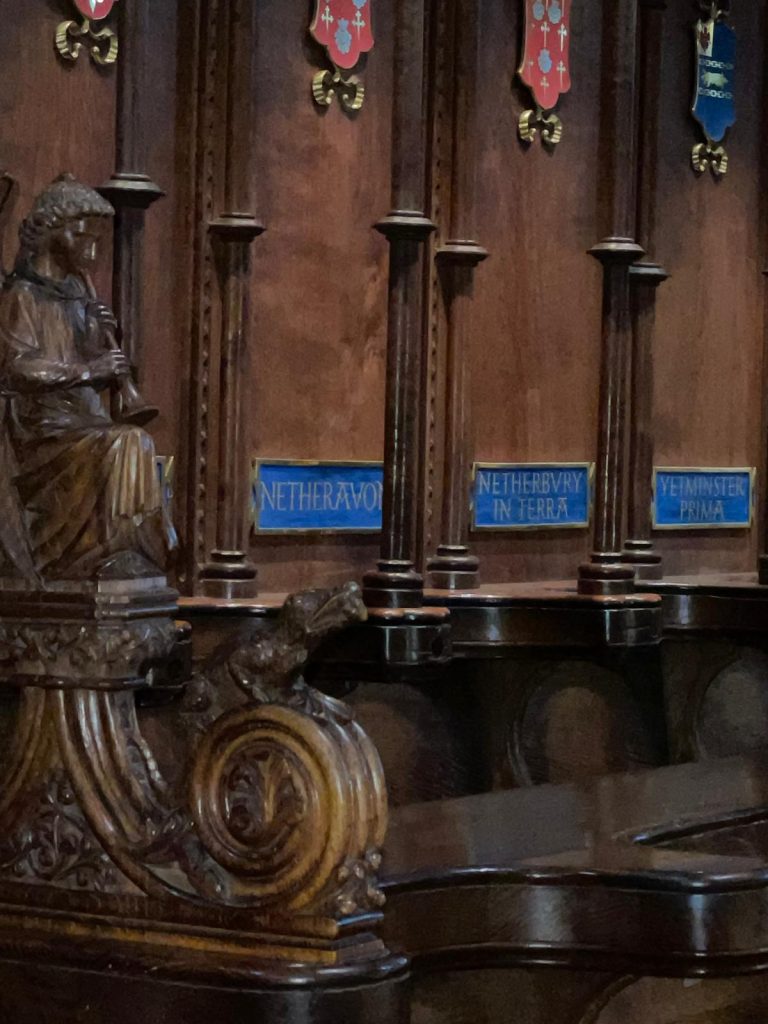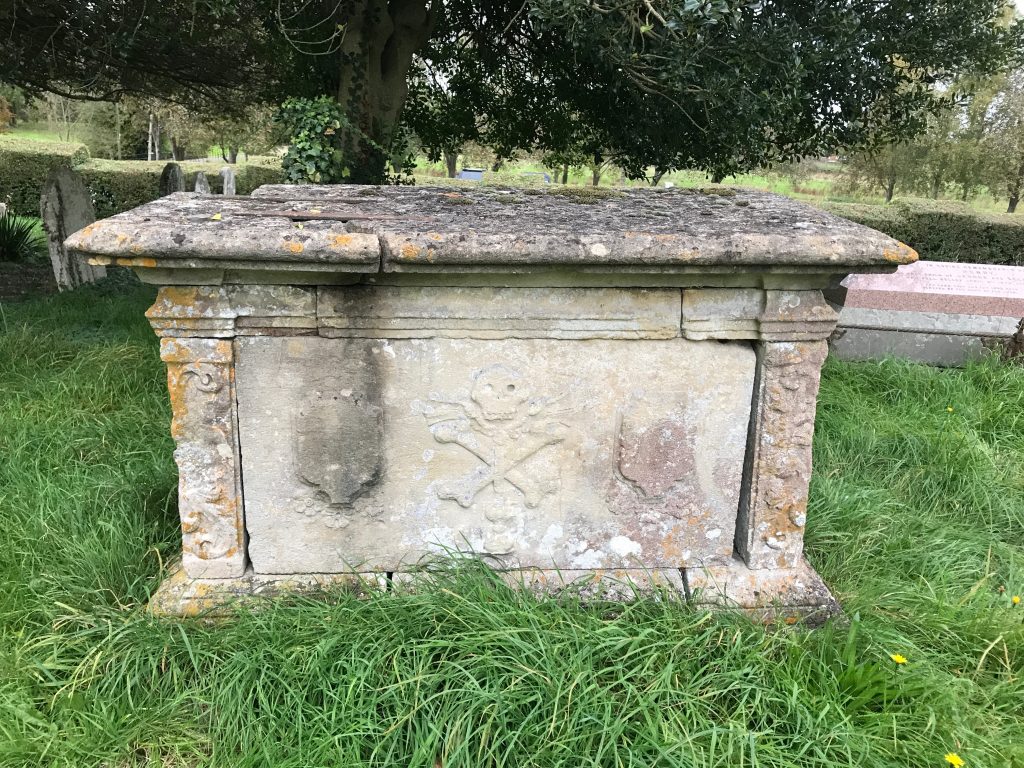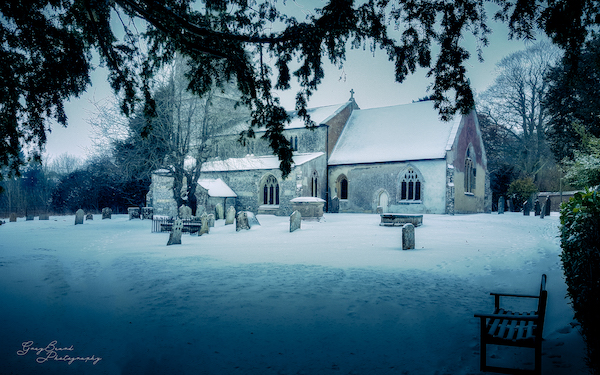Why is it so far from the village? We think of villages with the church in the middle near the pub! The answer lies with the Romans!
There is evidence of an early settlement on ground above a bend in the river in the area of White Sheet Hill (where the A345 goes through the former army camp). There are remains of an Iron Age or Romano -British village there alongside a Roman villa. Villas were to be found all along the Avon valley and were large farms which dominated the local economy.
The Roman Emperor Constantine allowed Christianity to flourish after 313AD, ending decades of persecution. The proximity of Netheravon church to the Roman site indicates a link with it and in spite of pagan Saxon incursions after the end of Roman control in 409/10 it is likely that it remained a local centre of Christianity. There were other buildings around it for sure, but to the north the ground is boggy as a winter bourne (stream) flows through the meadow and is liable to flooding. To the east and south is the river.
The unmetalled road which approaches the church from the village is in a direct line from the village High Street, with a small bridge over the bourne. The church’s setting is now in the parkland of Netheravon House (1734) which was landscaped in 1760. Buildings, including a parsonage, may have been removed when these changes took place. Meanwhile the village developed further up the High Street, particularly with a cluster of cottages in Mill Road near the water mill. A new vicarage was built in the High Street.
The Saxon church
After the Romans left Netheravon became part of the Saxon Christian kingdom of Wessex and an important administrative centre. The church had substantial local landholdings in late Saxon times plus Stratton St Margaret near Swindon. This indicates that it was probably a minster church, an important centre of administration and/or missionary activity, with a resident community of priests or monks. Its jurisdiction probably coincided with the secular administrative territory (or Hundred) of Elstub. This area included the later parishes of Enford and Fittleton. The settlement of West Chisenbury remained part of Netheravon parish until 1885.
Saxon doorway
Domesday book in 1086 describes Netheravon church as ruined, unroofed, and on the point of collapse. This implies that its status as an important minster church had come to an end, although we should remember that the survey took place twenty years after the Norman Conquest.
The building:
Today there are four visible openings in the church tower, two small ones in late Saxon style and two larger ones in early Norman. The two smaller openings, one of which is still in use, could have led to small chambers which housed the priests. It is possible that the tower was originally central and the church cruciform, and we do not know whether the upper stages of the tower are as old as the base. The church was restored in late medieval times; it was granted by the Crown to the cathedral at Sarum (Salisbury), and it was controlled by the prebendaries and dean as a “peculiar”. The income was used to support a prebendary priest, with a seat in the Chapter House of the cathedral. This meant that it was independent of the control of the bishop or other authorities and could appoint a vicar to serve the parish.
The great Norman arches in the tower are decorated with lions and stylized leaves.
Two porches existed during the middle ages, which could have been attached to the Saxon doorways. In 1405 the vicar was reprimanded for keeping his horse in one of them..
This is a large and impressive church, its nave retaining Norman columns within an altered Gothic structure. Nave and chancel were built in the C13th. Pinnacles were added to the tower in 1626 but are now removed.
Considerable restoration took place in 1839 and 1888, the latter by architect CE Ponting. The church tower needed repair in the early 1980s and £50,000 was raised to deal with a large crack.
The vicarage
A house for the vicar was probably always to the north of the church, possibly near the top of the present day church drive. Records show a vicarage house in 1613, burned down in 1694. Regarded as unfit in 1793, a new house was built further up the High St, near the site of the present one.
A later vicarage built in 1838 was demolished in the late C20th. It had substantial grounds and gardens and the village fete was held on its lawns at the end of May. These were lost when most of the site was sold for housing, (Vicarage Close) and the new vicarage built.
Sydney Smith
Sydney Smith became a curate at Netheravon church in 1794, aged 23; he was later known as a famous writer and wit. He had little in common with most of his parishioners but soon became tutor to the son of Mr Michael Hicks-Beach of Netheravon House. He established a Sunday school for local children and stayed four years. He became famous for his stirring lectures, sermons and writings, and supported the education of women and the abolition of slavery. He is also remembered for his rhyming recipe for salad dressing!
Netheravon church bells
There are six bells, the earliest of which is 1585; all were re-hung in a new iron frame in 1911. They have the following inscriptions:
Treble: This bell was cast in memory of JW Hussey 1911.
2nd: Hope Well, IW, 1609. Recast for AE Hussey in memory of his late father 1911.
3rd: Samuel Knight 1695
4th: O man be meeke and lyve in rest IW 1585
5th: Nathaniel Bolter made mee. WS, IS, KW, IH, LC, ID 1656
Tenor: In God is all my hope and trust. IW. 1588..Recast for AE Hussey in memory of his late father
The various initials relate to bell founders:
IW John Wallis of Salisbury
SK Samuel Knight of Reading
JB Jonathan Boulter of Salisbury bell foundry
JW and AE Hussey were owners of Netheravon brewery (Opposite what is now the school), a major industry in the village.
The pulpit is c.1919 and is a memorial to students of the 1913 course at the Cavalry School. It was sadly damaged by vandals many years ago.
The churchyard contains interesting memorials to local families, and commonwealth war graves.








